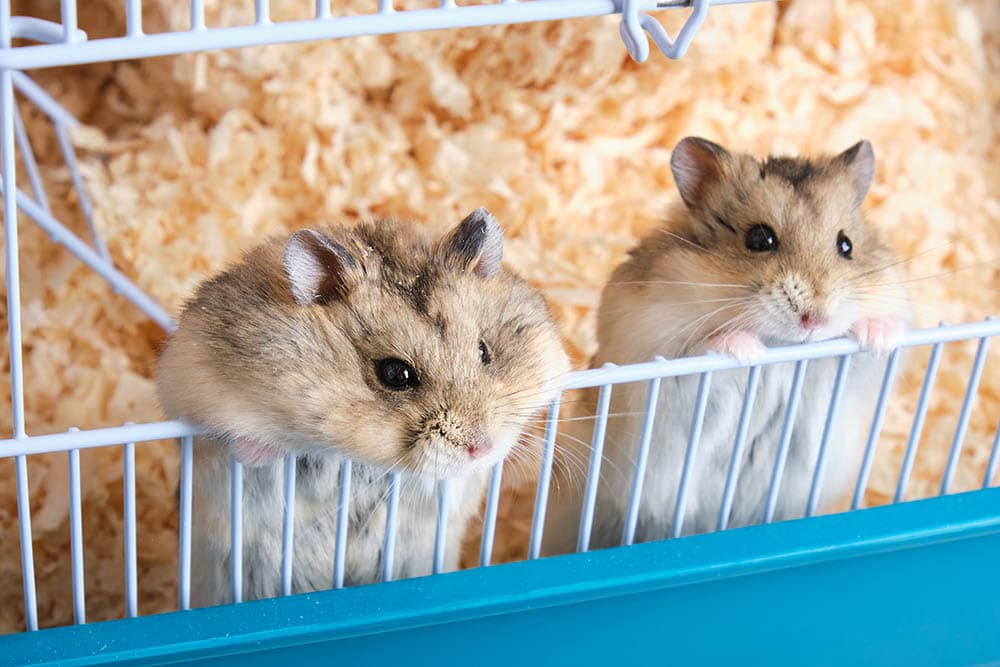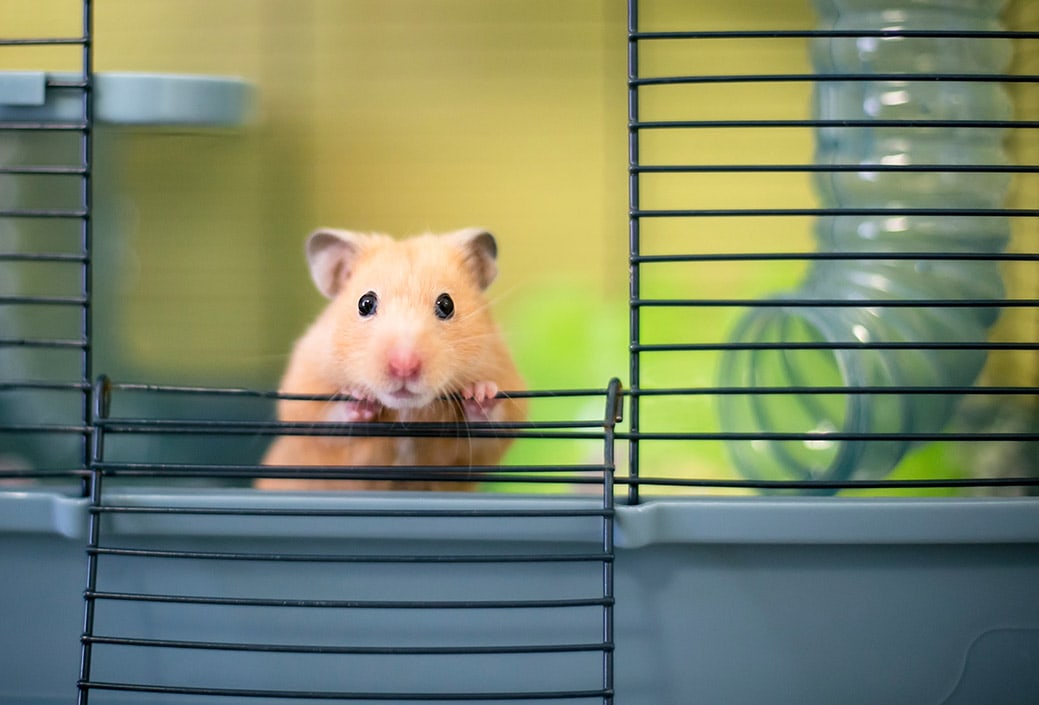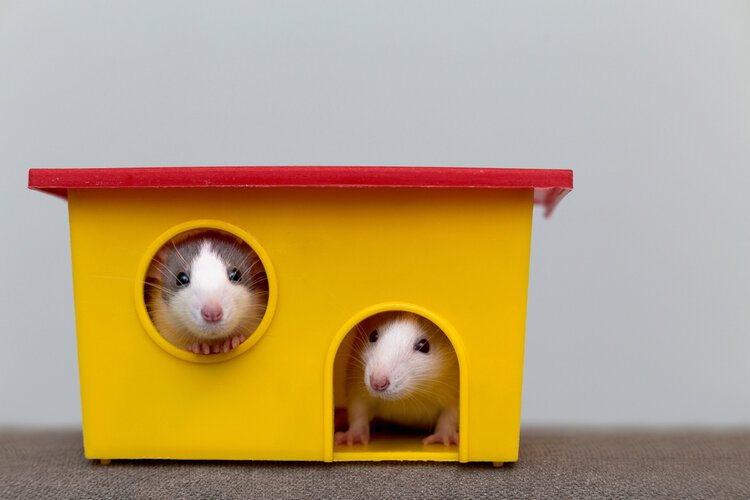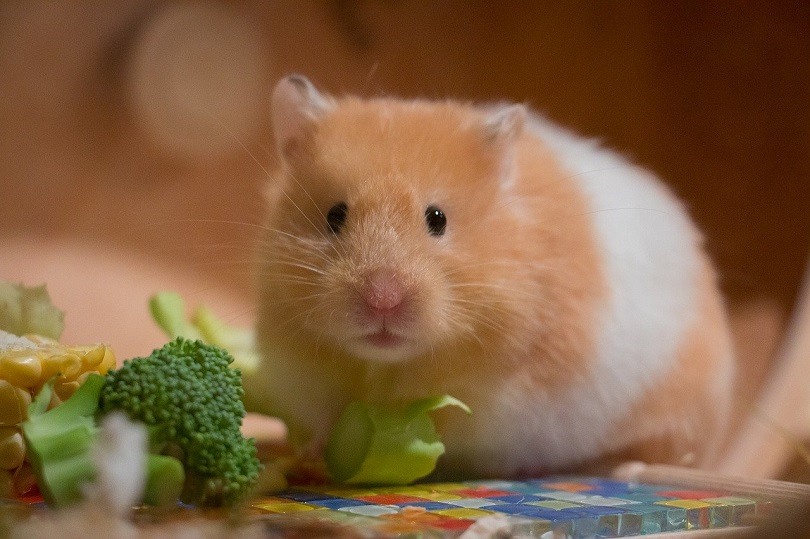
We’ve all heard that goldfish will eat until they burst. Myths like those exist for many pet species. However, do hamsters have the same trouble? We all know they are hoarders, taking all the goodies to stash away in private.
But do they munch on a smorgasbord of snacks until they disappear, regardless of how full they might be? They absolutely stop eating when they are too full, but that doesn’t mean they keep themselves from gorging. So, keeping our fluffy rodent’s diet well-portioned and healthful is crucial.
How a Hamster Eats
Hamsters are considered to be opportunistic omnivores. They tend to forage for seeds, legumes, vegetables, fruit, and meat sources, and are able to carry a large amount of food in their cheek pouches. They usually hoard their haul in their dens and frequently feed in intervals of about every two hours or so when food is abundant. This is a survival technique, as hamsters have many predators in the wild. The ability to transport large amounts of food to a safe location helps them avoid capture by having to repeatedly go out in search of food.
In experimental circumstances, hamsters are able to adjust their dietary intake depending on their nutritional needs, and therefore, they can pick and choose what to eat at times when they feel like they are lacking a certain nutrient in their diet. Wild hamsters rarely overeat in a single sitting and instead they prefer to store excess food in their favorite den, burrow, or hiding spot to eat later.
Hamsters have been used in many studies for implications involving human medicine, and in some of these studies, their responses to nutrition have been assessed. However, an optimal rating for many nutrients has not been established in hamsters, though values at which they thrive have been identified.
As pets, hamsters are best kept on a pellet diet that is supplemented with appropriate fruits, hay, vegetables, nuts, seeds, insects, meat and meat by-products, and legumes. The fundamental challenge for hamster owners is to ensure that they remove uneaten food from their hamster’s cage – especially food that easily spoils when left outside. For this reason, food with a high shelf life (such as grains, hay, seeds, and pellets) are preferred over fresh produce (such as fruits and vegetables). Nonetheless, fresh produce does offer some nutritional benefits to hamsters, which is why they should be considered as part of their diet. However, most fruits and vegetables are treated as an occasional morsel rather than a daily dietary staple.
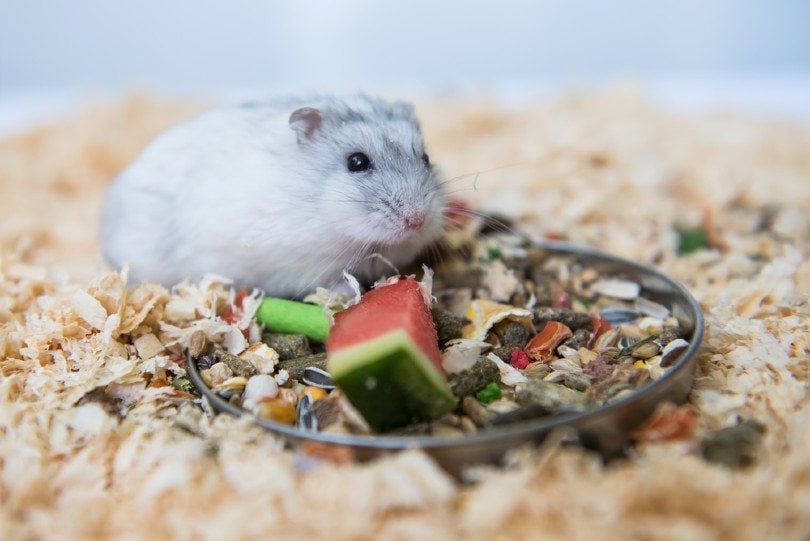
Hamsters Are Cherry-Pickers
Many hamster foods exist on the market. But any experienced owner will tell you that solid pellets are likely the way to go. These pellets have evenly distributed nutrients that create a well-balanced diet.
Often, hamsters are like children—they pick their favorite goodies first and leave the rest for later. So, you must be mindful about what you’re giving them—and how much. Hamsters can easily store away less-than-desirable goodies while packing in their desired foods, and you might not know until it’s cleaning time.
This could cause an imbalance in their diet and be the prime reason why they’re getting extra “fluffy.” Obesity can play a major role in future health issues, so it’s best to nip it in the bud when you notice it’s becoming a problem.
How Frequently to Feed Hamsters
Hamsters comfortably eat approximately 1 to 2 teaspoons of food daily—and they usually do most of their snacking at night. However, pet hamsters can easily adapt to feeding during the day.
Commercial pellets you offer should have between 15% to 20% protein and under 10% fat. Commercial foods give your hamster just the right balance of nutrients, so save snacks for after mealtime. Hamsters need a good supply of fiber in their diet, often in the form of hay.
Remember that rations might differ depending on the type of hamster, the age, and the activity level. For example, a very active hamster will need more than a sedentary individual.

Fresh Foods for Hamsters
While hamster-specific feed should be the staple in any hamster diet, you can (and should) give your hamster a variety of fresh fruits, veggies, grains, and lean meat. They thrive on these fresh items—and it will likely become some of their favorites, gobbled up long before their dry pellets.
However, they also stash what they don’t need. So if you overfeed a little, make sure to scour the cage at the next mealtime to prevent decay.
If you’re looking to spruce up your hamster’s diet a little, here are fresh fruits and vegetables to try:
Even though your hamster is sure to appreciate all of the fresh foods you give them, you need to do so in reasonable portions. If you find a lot of leftovers in your hamster’s cage the next day, cut back on portions next time.
Hamster Fun Fact
Something unique about a hamster is that it can hold a substantial amount of food items in its mouth. It is estimated that a hamster can hold as much as its own body weight of food in both of their cheeks. Typically, they store it to hoard it for later. Hamsters have also been observed filling their cheek pouches with air to use as a makeshift raft to safely cross bodies of water. Pretty impressive if we do say so ourselves.
Conclusion
Hamsters can’t eat until they burst, but they certainly hoard food. It’s very commonplace for them to pick a part of their cage to stash all the goodies. So, always ensure to properly ration your hamster’s food and clean out any fresh items the day after you give them.
Also, ensure they have their commercial diet first and foremost, so they are not cherry-picking all of the sugary foods first.
See Also:
Featured Image Credit: mordilla-net, Pixabay



